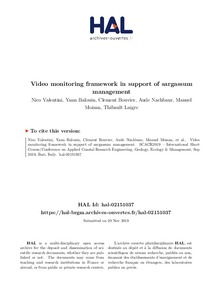| dc.contributor.author | Valentini, Nico | |
| dc.contributor.author | Balouin, Yann | |
| dc.contributor.author | Bouvier, Clement | |
| dc.contributor.author | Nachbaur, Aude | |
| dc.contributor.author | Moisan, Manuel | |
| dc.contributor.author | Laigre, Thibault | |
| dc.coverage.spatial | Caribbean Sea | en_US |
| dc.coverage.spatial | Martinique | en_US |
| dc.date.accessioned | 2020-06-17T17:23:37Z | |
| dc.date.available | 2020-06-17T17:23:37Z | |
| dc.date.issued | 2019 | |
| dc.identifier.citation | Valentini, N. et al (2019) Video monitoring framework in support of sargassum management. Presented at: SCACR2019 – International Short Course/Conference on Applied Coastal Research Engineering, Geology, Ecology & Management, Sep 2019, Bari, Italy, 7pp. DOI: http://dx.doi.org/10.25607/OBP-862 | en_US |
| dc.identifier.uri | http://hdl.handle.net/11329/1356 | |
| dc.identifier.uri | http://dx.doi.org/10.25607/OBP-862 | |
| dc.description.abstract | The waters off Caribbean islands have seen large amounts of Sargassum seaweed during the last
years (Wang and Hu, 2016). This record-breaking events of algae blooms and mass stranding started
in earnest in 2011, then 2015 saw the next large-scale event and in January 2018, unusually large
aggregations of Sargassum have been spotted on satellite imagery (Optical Oceanography
Laboratory, n.d.). Normally, when floating offshore Sargassum provide important habitat and refuge
to a large diversity of animals. However, while weeds approach nearshore and beach, due to currents
and winds actions, in such massive quantities, they start to be deathtrap for many animals and
contribute to the degradation of important coastal habitats, threatening coastal activities and
ecosystems. The decomposing mass, which can be several meters high, creates oily slicks in its wake
and releases a foul odor, damaging tourism activities since the sight and smell left beaches highly
unappealing. Both satellite and modelled surface current data point to the North Equatorial
Recirculation Region as the origin of recent mass blooms – north of the mouth of the Amazon,
between Brazil and west Africa, in an area not previously associated with Sargassum growth (Gower
et al., 2013).
A number of factors including nutrients, rising sea temperatures and Sahara dust storms have been
put forward as potential causes (Louime et al., 2017). Mathematical models developed to analyze
satellite imagery and detect floating algae, the Floating Algae Index (FAI) (Hu, 2009), reveal that it
is only in recent years that the area has seen the mass proliferation of Sargassum – satellite imagery
from before 2011 shows the area to be ‘largely free of seaweed’. A number of strategies have been
planned to deal with the large accumulations of algae resulting from the mass blooms. Removal and
burial of the algae as soon as it gets stranded at beaches has been widely recommended (CRFM,
2016), although it appears to harm the environment (turtle habitat) and more specifically the
sediments loss at beach.
Nowadays, the information retrieved from remote sensing satellite system are very useful in order
to estimate qualitatively and quantitatively the presence and motions of such macroalgae offshore.
Unfortunately, operational warning devices able to anticipate algae washing ashore still have
disadvantages related to the inadequate sampling and temporal frequency (MODIS observations
e.g., Wang and Hu, 2017) and the interposing obstacles such as cloud shadows, sun glint constitute
important issues; actually, there is little room for improvement as these are natural phenomena.Aside
the need of anticipation, there is a need for the local government to deal with this severe issue and
increase the abilities of quantifying Sargassum onshore on a seasonal basis. There is a special need
for management planning in order to an increased resilience and benefit from Sargassum influxes
(Cox, S., 2019). Location and amounts of Sargassum ashore can be then accurately evaluated to requirements.
The purpose of this study is to implement a video-based framework approach in order to classify the
coastal morphologies and specifically detect floating and beached algae in a very efficient and
replicable manner with a moderate cost. This is conducted by means of a semi-supervised
superpixel-based Deep Convolutional Neural Network (DCNN) classification of ground-sensed
images. The implementation of a warning system for algae’ quantification with a relative
thresholding approach will be described and a discussion on extension for not-instrumented coastal
sites will be presented. | en_US |
| dc.language.iso | en | en_US |
| dc.subject.other | Sargassum | en_US |
| dc.subject.other | Management | en_US |
| dc.subject.other | Video | en_US |
| dc.subject.other | Algal blooms | en_US |
| dc.title | Video monitoring framework in support of sargassum management, | en_US |
| dc.type | Book Section | en_US |
| dc.description.status | Published | en_US |
| dc.description.refereed | Refereed | en_US |
| dc.format.pagerange | 7pp. | en_US |
| dc.subject.parameterDiscipline | Parameter Discipline::Biological oceanography::Macroalgae and seagrass | en_US |
| dc.description.currentstatus | Current | en_US |
| dc.title.parent | SCACR2019 – International Short Course/Conference on Applied Coastal Research Engineering, Geology, Ecology & Management, Sep 2019, Bari, Italy. | en_US |
| dc.description.sdg | 14.2 | en_US |
| dc.description.eov | Macroalgal canopy cover and composition | en_US |
| dc.description.maturitylevel | TRL 8 Actual system completed and "mission qualified" through test and demonstration in an operational environment (ground or space) | en_US |
| dc.description.bptype | Manual (incl. handbook, guide, cookbook etc) | en_US |
| obps.contact.contactemail | n.valentini@brgm.fr | |
| obps.resourceurl.publisher | https://hal-brgm.archives-ouvertes.fr/hal-02151037/document | en_US |
 Repository of community practices in Ocean Research, Applications and Data/Information Management
Repository of community practices in Ocean Research, Applications and Data/Information Management
